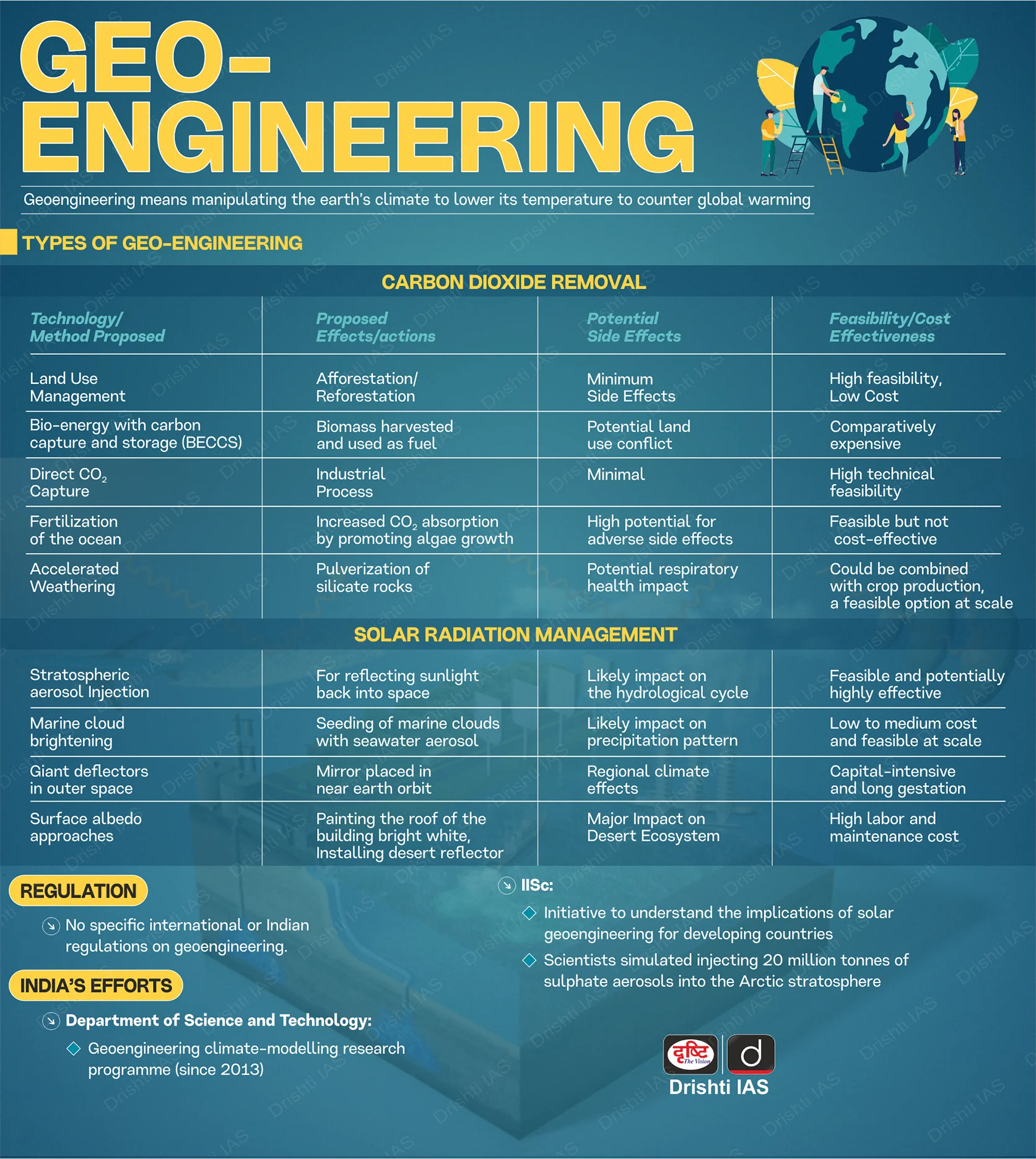Enhanced Rock Weathering | 26 Jun 2025
Source: TH
Enhanced Rock Weathering (ERW), a promising technique to combat climate change, involves spreading crushed basalt on agricultural lands to speed up carbon dioxide capture from the atmosphere.
- This method is drawing attention from tech giants and industries seeking to offset their emissions.
Enhanced Rock Weathering
- About: ERW accelerates the natural process of weathering, where rocks like basalt break down and lock away carbon dioxide in the form of bicarbonate, eventually turning into limestone. This process is turbocharged by grinding the rocks finely to increase their surface area.
- Carbon Sequestration: By using finely ground rock to increase surface area, ERW enhances the rate of geological carbon sequestration, making the process significantly faster than it occurs naturally.
- Additional Benefits: ERW enhances soil alkalinity, improving crop yield and fertility, while also reducing downstream CO₂ emissions by neutralizing soil acids before they reach rivers and oceans.
- Debatable Effectiveness: As a new technology, ERW shows mixed results in carbon removal.
- While some studies report up to 10.5 tonnes of CO₂ per hectare over four years, others show lower rates, underscoring the need for accurate measurement and further research.
- Risk and Challenges: While ERW is generally safe, some quick-weathering rocks may release harmful heavy metals.
- The main concern is overestimating carbon capture, which could inflate carbon credits and lead to higher emissions.
- Global Implementation: ERW is being trialled worldwide, from Darjeeling tea estates to US soy and maize farms, with Brazil issuing the first verified ERW carbon credits.
- Growing Investor Interest: Google signed the largest ERW deal for 200,000 tonnes of credits. Also, Mati Carbon (India startup) won the USD 50 million X Prize for carbon removal.
|
Read More: Carbon Sequestration |

